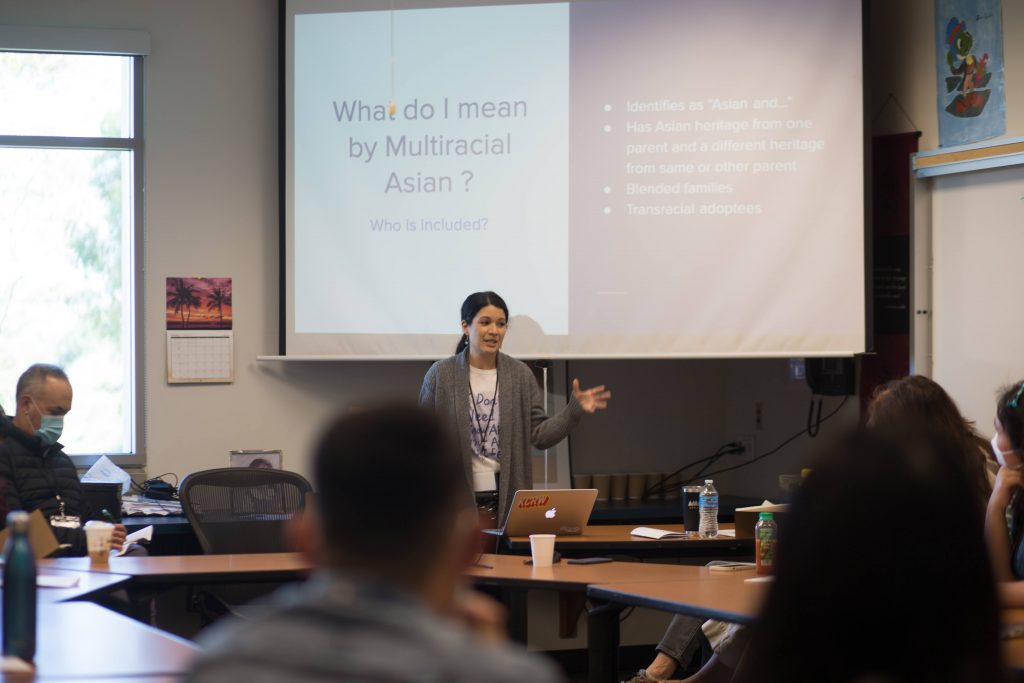Legendary Asian American civil rights activist Yuri Kochiyama once said, “Life is not what you alone make it. Life is the input of everyone who touched your life and every experience that entered it. We are all part of one another.” Ironically, it’s often when I gather with people under the banner of a shared identity that this sentiment truly comes alive, and I realize how intricate and vast the human experience really is.
From March 25th to March 27th Leya Jones, Isa Oon, and I all had the privilege of sharing space with other Asian American educators at the Asian Educators Alliance (AsEA) National Conference in Newport Beach, California. From the very beginning, the conference clearly communicated an intent to coalesce as a community first, rather than leaning into the academic atmosphere that comes both with the setting and the content. Conveying this tone may seem easy on the surface, but as someone with the experience of organizing over a dozen national and international conferences, I know that it’s one thing to mouth “community” and it’s quite another thing to physically relax into communion with strangers from across the country.
I’ve spent my whole life being the only Black, white, and Vietnamese person in the room, so I’ve come to expect that a room will be filled with more of Emily Style’s proverbial “windows” than “mirrors” to my experience. While “Asian American” began as a political term meant to unify various people groups experiencing similar oppression, in recent times it’s been appropriated to stand for an easy checkbox in the diversity list that erases the multiplicity of identities it is meant to stand for, often reducing us to singular representations.
At the AsEA conference, however, not only were there a myriad of Asian Americans represented in origin but also in skin tone; you could look around a room at any given moment and witness the vibrant rainbow of pale to tan to deep brown that reflects the reality of those of us in the global majority. As Jolina Clement mentioned in the “Multiracial Identity: Hyping the Hyphen” workshop, there’s a real privilege in being “in a space and not [having to] explain why I get to be in a space.” Often it was difficult to tell who was a keynote speaker, organizer, workshop leader, teacher, or student in the space, creating a climate of openness and adding a real authenticity to the moments of sharing.
This impression not only imbued the optics of the space, but also the content. The theme, “Radical Re(Imagining) of Asian America: From Myth to Truths,” created a shared metaphorical and literal landscape for both dispelling harmful myths (such as the Model Minority) and reconnecting to pre-colonial understandings of our world, often connected to “myth” and folklore. In “Hyping the Hyphen” we broke down the notion of multiracial Asian Americans as a recent phenomenon, tracing historical records back before the Chinese Exclusion Act and leaning into thinking of multicultural experience as pluralities, not fractions. In “Return to Our Cultural Psychologies to Disrupt the White-Dominant LGBTQ+ Spaces and Narratives” Lilia Cai and Maria Graciela Alcid interrogated what it means for us as educators to hold space for both our own and our students’ intersectional identities without forcing them to fit into narratives that were not built with us in mind. In “We Are Not Monoliths: From Essentialism to Panethnicity” Ricco Siascoco continued the conversation on what it means to have a shared identity that forges connection but can also erase vital disparities between cultures.
Student programming was also a highlight of the conference, involving multi-day workshops with educator and writer Dr. Liza Talusan who challenged participants to dig into what they wanted to build knowledge, engage in reflection, and then move to action to determine 1. what their respective schools needed to start doing, 2. what their schools needed to stop doing, 3. what needed to change, and 4. what needed to continue. This experience culminated in a final share out where students’ voices were centered, reading each other’s work to protect privacy while being able to voice their concerns candidly with their teachers in the presence of other educators. It provided a key reminder that our job as teachers is a continuous push for positive change centered on the needs of future generations in conjunction with ours, a reminder that the age-old translation of I love you, “Did you eat yet?” is a call to both feed ourselves and our students, together.

